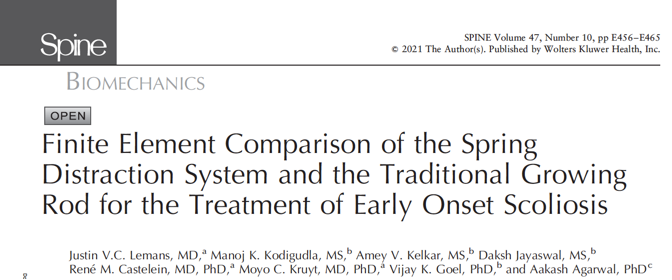Titanium pedicle screw hold de cobalt chrome rods.
Rods (4.5/5mm) can be shaped to the anatomical requirement and slide through the smooth connectors.
The compressed helical spring, available in various lengths and strengths, fits around the rod and allows for a continuous distraction.
The connector lined with polyethylene (PE) provides a smooth sliding environment for the rod.























